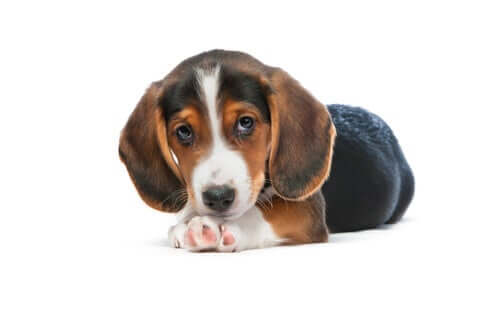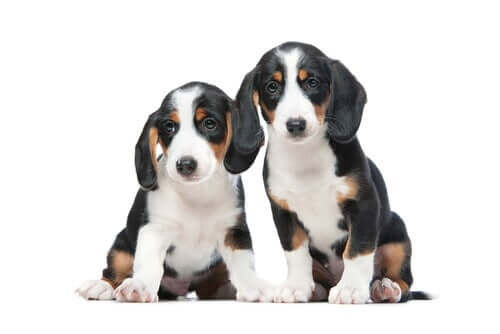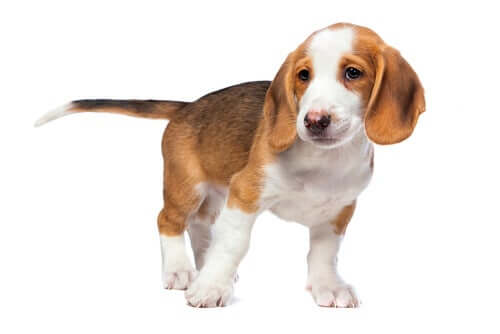The Westphalian Dachsbracke: A Miniature Hunting Dog

This old German breed combines the abilities of large hunting dogs with the versatility of a compact, muscular body. Meet the miniature hunting dog: the Westphalian Dachsbracke!
The origins of the Westphalian Dachsbracke
This breed is the product of a cross between German, French, and English hunting dogs. People often refer to it as a miniature version of its close cousin, the Bavarian mountain hound. The standard Westphalian Dachsbracke didn’t appear until 1910, and the official recognition of the standard breed came even later, in 1987.
People used this breed to help develop other small dog breeds, like its Swiss descendant, the Drever. These two breeds have a very similar fur color, and have the same small, stocky body. This is often a point of confusion for dog owners.

Characteristics and morphology
The World Canine Organization puts this breed in group 6, which is the group for scent hounds and other related breeds. Westphalian Dachsbrackes are compact hunters, usually only about 1 foot tall. They’re still big and muscular, though, and are just like a miniature version of a typical hunting dog.
The shape of their head, the length of their back, and the angle of their tail all give this breed a noble appearance. That’s part of what attracted wealthy Germans to it, and that’s how controlled breeding started for it. Their back legs are similar to a Dachsund’s, but they’re much stronger and more muscular.
The coat on a Westphalian Dachsbracke is usually thick and anything between red, yellow, and black. They occasionally have the white spots that are typical of other German hunting dogs. To be accepted as a purebred, they can have two or three colors, so long as they don’t have any coffee or chocolate in their coat.

The Westphalian Dachsbracke: diet and training
This breed of dog may be small, but they’re full of energy. That means that they need a diet that works for an active lifestyle. You also shouldn’t forget that all hunting dogs need daily physical and mental stimulation.
Lots of owners think that this breed is like other small dogs that don’t need much physical activity. But, in reality, they’re far from the kind of pet that doesn’t want to do anything but watch TV with you.
As a hunting breed, it’s relatively easy to train them, because they’re generally good at paying attention and want to please you. They’re usually not dominant or aggressive, but they can still be stubborn and overly independent. This means you or your trainers may need to be patient and persist with the training as much as necessary.
What to expect out of the health and behavior of your new pet
This is an active, affectionate, and energetic breed of dog. They’re very versatile and careful around kids, which makes them a great option if you’re looking for a family pet. Like just about any dog, the Westphalian Dachsbracke likes company and exercise. That also means that if it gets bored, it might start to engage in destructive behavior.
They generally don’t have major health problems either, and they aren’t a breed with any serious hereditary conditions. The main thing to watch out for is their weight. As they get older and don’t exercise as much, they can end up becoming obese. They are also prone to ear infections because of the position of the ears on their body.